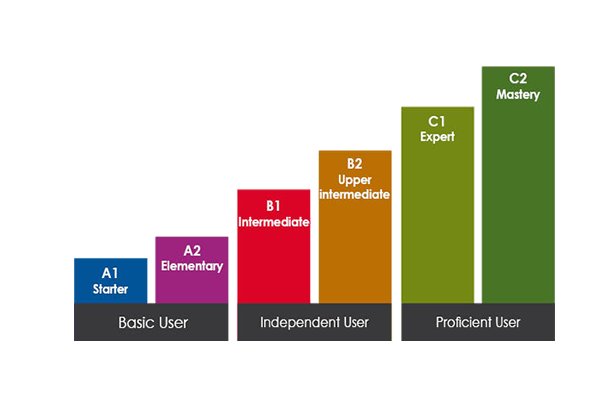Language/Multiple-languages/Vocabulary/Measuring-Language-Learning-Progress
The Complete Guide to Measuring Language Learning Progress and How it's Different from Other Forms of Education
Hello polyglots! 🤩
This guide will help you understand how language learners can measure their progress to set goals and stay motivated. Language learning is a big part of our lives. It is the key to unlocking new cultures and understanding different people.
This section will discuss how you can measure progress in language learning. We will also discuss the language learning curve and how it can measure your progress.
Why You Should Measure Your Progress[edit | edit source]
As you start learning a new language, it can be difficult to see progress. How do you know if you're making any progress at all? This is where measuring your language progression can come in handy. It can help keep you motivated and on track for your goals. There are many ways of measuring your achievement; one good way is to use an app that tracks your progress and compares it with others learning the same language as you. This will give you a better idea of how far ahead or behind you are compared to others who are on the same journey as you.
An Introduction to the Language Levels[edit | edit source]
The Common European Framework of Reference for Languages (CEFR) is a framework created to help learners and teachers measure the level of their language skills.
The CEFR has six levels: A1, A2, B1, B2, C1, and C2. The CEFR was first introduced in 2001 by the Council of Europe. The primary purpose of the CEFR is to provide a standard reference for Europeans who want to learn or teach foreign languages. The Council of Europe created this framework because they wanted to make it easier for people who are learning foreign languages in different countries to communicate with one another. They also wanted it to be easy for teachers and schools in different countries to compare students' progress with one another.
Levels are grouped into three bands: A-B-C. A1 is the lowest level in the A-B-C band, and C2 is the highest level in the same band. A2, B1, and B2 belong to one of these bands but are not part of a specific group. The levels A1-A2 are designed to introduce learners to the basics of using English. They will be able to communicate with simple vocabulary and express themselves. Learners will be able to understand the main points of what is being said, and they will also be able to understand some of the details.
A0 - No language skills[edit | edit source]
At this level, the individual can recognize some words, but not enough to form sentences or carry on any sort of conversation.
A1 - Basic User[edit | edit source]
Can understand and use familiar everyday expressions and very basic phrases aimed at the satisfaction of needs of a concrete type. Can manage in most situations where the language is used but cannot deal with more complex tasks.
A2 - Waystage User[edit | edit source]
Can understand sentences and frequently used expressions related to areas of most immediate relevance (e.g., fundamental personal and family information). Can communicate in simple ways in well-known contexts, about familiar topics or of personal interest, give simple information on own background, interests, daily activities, etc., as long as the other person speaks slowly and clearly and is prepared to help
B1 - Threshold or intermediate[edit | edit source]
Can understand familiar everyday expressions and simple sentences. Can communicate in a simple way, mainly about concrete topics.
B2 - Vantage or upper-intermediate[edit | edit source]
Can understand sentences and frequently used expressions related to areas of most immediate relevance. Can communicate spontaneously on familiar topics in a limited way.
C1 - Effective Operational Proficiency or advanced[edit | edit source]
Can effectively hold the audience's attention and communicate complex ideas.
C2 - Mastery or proficiency[edit | edit source]
The C2 level shows that the individual has mastered English to an exceptional level. It shows the individual can study demanding subjects at higher levels, such as postgraduate and Ph.D. programs.
How Can You Measure Your Level of Fluency in English?[edit | edit source]
The most common way to measure language proficiency is by using a language test. Language proficiency tests are often used in immigration, job applications, and academic admissions. There are many different language tests, but they all have one thing in common: they test your ability to use the language. Tests usually include listening comprehension, reading comprehension, writing skills, and speaking skills. Measuring your level of fluency is a great way to see if you need to work on your English skills. It can also be a good idea for those who want to determine their level. Nonetheless, language proficiency tests are not always accurate measures because they do not consider the context in which someone speaks or writes in their native tongue.
The Duolingo English Test[edit | edit source]
It is to show you how well you speak English. It is a free, valid certificate to prove your proficiency level. Over 3000 institutions still accept it.
The Pearson Test[edit | edit source]
It is a test that helps you measure your level of fluency in English. It is a great way to see how much progress you have made and what areas need more work. You can take this test to see where you are at and what steps to take next. PTE test-takers usually get their results within 48 hours. There are many different test dates to choose from, and you can book last-minute ones.
The IELTS test[edit | edit source]
It is a standardized English-language test that assesses the language proficiency of people who want to study or work in an English-speaking environment. The four sections of the IELTS test are: reading, writing, listening, and speaking. The Speaking section is designed to assess your fluency in English.
The TOEFL test[edit | edit source]
It is a language level test that can measure your English fluency level. It is a standardized and computer-based test, and it is recognized by many institutions and universities around the world.
The TOEFL test has four levels:
- TOEFL iBT: The most widely accepted standard for college admissions in the US, Canada, and Australia.
- TOEFL Paper-based Test (PBT): A more traditional way of taking the exam is still used in some countries.
- TOEFL Junior: A paper-based version of the exam for those younger than 18 years old.
- TOEFL Speaking Tests: There are two types of speaking tests – one for high school students
Cambridge English Qualifications[edit | edit source]
- The CEF test is a test used for adults who want to measure their level of English fluency. It is based on the Common European Framework of Reference for Languages. The CEF levels are grouped into five levels. Level one is the lowest, and five is the highest level.
- The Cambridge Certificate of Advanced English (CAE) is not as common as the TOEFL or IELTS, but it is often required for admission to UK universities. It is ideal for someone who is already confident in their English communication. The CAE test is a high-level English language proficiency test that measures the ability of non-native English speakers to use and understand English at a level that would enable them to study at a degree level in an English-speaking country. The CAE test is not an easy exam. It requires preparation and practice. There are many different ways to prepare for this exam, so it is crucial to choose the one that best suits your needs.
- The Cambridge Certificate of Proficiency in English is the most advanced language qualification. It is often used in UK university admissions and by employers to serve as proof that you can use English to communicate effectively in an academic or professional context. The CEP tests how well someone uses English to communicate at a business level, with particular emphasis on how well they use spoken and written English for social, academic, or professional purposes. There are three levels of exams: Preliminary, Vantage, and Higher. The exam content is different for each level, so it's essential to know which one you should take based on your current level of fluency.
| Name | Meaning | Cost | Duration | Expiration | Grades | Minimum Score (Universities) | Online or Paper-Based | Number of Test Parts | Number of Questions | Level of Difficulty | Booking | Applications |
|---|---|---|---|---|---|---|---|---|---|---|---|---|
| IELTS (Academic or General Training) | International English Language Testing System | 170€ | 3 hours
Listening - 40 minutes Reading - 60 minutes Writing - 60 minutes Speaking - 11-14 minutes |
2 years | 1-9 | 6-6.5 | Paper-based and computer-based | 4 - Listening, Reading, Writing and Speaking | Listening - 40 questions
Reading - 40 questions Writing - 2 tasks |
Beginner to Advanced | Twice a month | Employment |
| IELTS for UKVI | International English Language Testing System for UK Visas | 228€ | 2 years | 1-9 | 6-7 | Paper-based and computer-based | 4 - Listening, Reading, Writing and Speaking | Listening - 40 questions
Reading - 40 questions Writing - 2 tasks |
Beginner to Advanced | Twice a month | Higher education and employment | |
| PTE | Pearson Test | $250 | 2 hours
Listening - 54-67 mins Reading - 29-30 mins Speaking & Writing - 30 - 43 mins |
2 years | 10-90 (Global Scale of English) | 55-60 | 3 - Speaking & Writing, Reading, and Listening | Beginner to Advanced | Higher education and employment | |||
| TOEFL | Test of English as a Foreign Language | 4 hours
Listening - 41-57 minutes Reading - 54-72 minutes Writing - 60 minutes Speaking - 17 minutes |
2 years | Paper-based and computer-based | 4 - Reading comprehension, listening comprehension, speaking, and written expression | Listening - 28-39 questions
Reading - 30-40 questions Writing - 2 tasks |
Beginner to Advanced | More than 50 times a year | Higher education and employment | |||
| CAE | Cambridge Certificate of Advanced English | 227€ | Reading- 1hr 30 mins
Writing - 1hr 30 mins Listening - 40 mins Speaking - 20 mins |
Does not expire | Equivalent to 7-8 on the IELTS | B - A | Paper-based and computer-based | Advanced | Every month | Higher education and employment | ||
| CPE | Cambridge Certificate of Proficiency in English | 240€ | Reading- 1hr 30 mins
Writing - 1hr 30 mins Listening - 40 mins Speaking - 16 mins |
Does not expire | Equivalent to 8.5-9 on the IELTS | B - A | Paper-based and computer-based | Advanced | Twice a year in June and December | Higher education and employment |
4 Tips on How to Keep Track of Your Language Progress Throughout the Day[edit | edit source]
In today's world, we are constantly bombarded with distractions. This can make it difficult to focus on what we need to do. It can be even more difficult for language learners who have a lot of material to study and practice. Here are tips on keeping track of your language progress throughout the day so that you can stay focused and motivated.
- Keep a record of your daily progress in a journal or diary. Create a routine that is customized to your needs and lifestyle. Depending on when you like to study the most, you might want to choose an early morning routine or an evening routine.
- Set achievable goals for yourself and keep track of them in the journal or diary.
- Track your progress: Keep track of your progress by using an app such as Duolingo or Memrise, free and easy to use. These apps will help you monitor your progress. Using progress charting software makes it easy to track your daily progress throughout the day and see how far you have come from where you started when it comes to learning a new language.
- Reward yourself with something special every time you reach one of your goals, no matter how small it may seem at first, and document it in the journal.
Sources[edit | edit source]
- https://www.britishcouncil.it/en/exam/cambridge/business
- https://academicpositions.com/career-advice/a-guide-to-english-proficiency-tests
- https://corporatefinanceinstitute.com/resources/careers/resume/language-proficiency-levels
- https://www.cambridgeenglish.org/exams-and-tests/proficiency/
- https://englishtest.duolingo.com/
- https://www.britishcouncil.es/en/advanced-certificate-english-cae
- https://www.ielts.org/for-test-takers/how-ielts-is-scored
- https://www.ielts.org/for-organisations/ielts-scoring-in-detail
- https://www.ieltsprogresscheck.com/ielts-general-training-test-format/
- https://www.mastersportal.com/articles/2771/ielts-vs-toefl-vs-pte-which-english-test-should-i-take-in-2022.html
- https://www.pearsonpte.com/test-centers-and-fees
Other Lessons[edit | edit source]
- Probability Theory
- CJKV False Friends
- Mathematical Analysis
- Category Theory
- Greetings Reply to a greeting
- Transparent Words
- Musical Notes in Many Languages
- Collocations with get
- Planets in many languages
- Tribology



